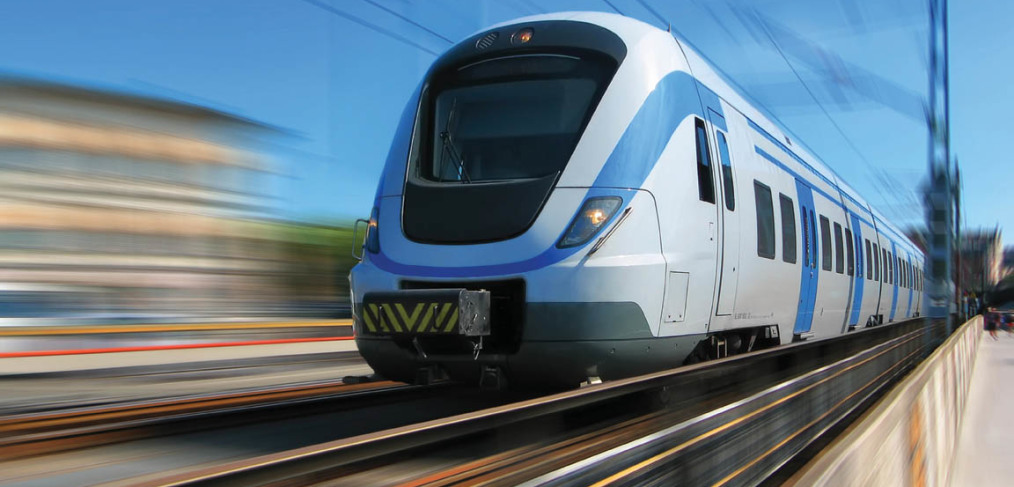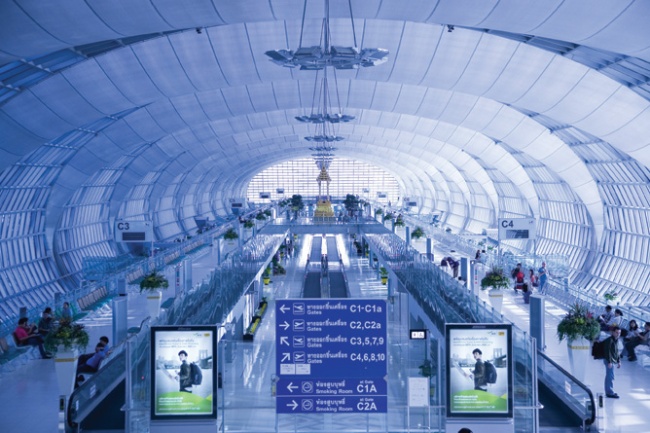
Thailand: Full Speed Ahead
 With the inauguration of the Asian Economic Community (AEC) due to take place at the end of 2015, Thailand is ideally situated to take full advantage of the opportunities that regional economic harmonisation offers. Words by Mark Bibby Jackson.
With the inauguration of the Asian Economic Community (AEC) due to take place at the end of 2015, Thailand is ideally situated to take full advantage of the opportunities that regional economic harmonisation offers. Words by Mark Bibby Jackson.
Nobody could accuse Yingluck Shinawatra of demonstrating reticence. In announcing a 2.2 trillion baht (around US$70 billion) infrastructure package aimed at improving the country’s rail, road, water and air networks earlier this year, the Thai Prime Minister is boldly leading her country into the forthcoming Asian Economic Community (AEC).
The programme of 55 separate projects that some reports estimate will benefit the Thai economy to the tune of 3 to 3.5 billion baht (around US$96 to US$112 million) is a vital component of the country’s long-term aim to become ASEAN’s logistic hub, says government spokesperson Wim Rungwattanajinda. This is why Yingluck Shinawatra has taken the step of introducing an Act of Parliament empowering the Ministry of Finance to seek funding for the package from private banks rather than incorporating it into the annual budget.
At a working dinner with representatives of the Thai Bankers’ Association on September 18, the prime minister explained that the Bill would ensure funding for the works regardless of any potential change of government.
The move was welcomed by banking leaders. Siam Commercial Bank President, Kannikar Chalitaporn, said it would enhance Thailand’s competitiveness internationally, as well as improving the country’s regional connectivity on the path towards becoming the “Gateway of ASEAN”.
Kittirat Na Ranong added that the project implementation will be transparent and that the cost estimate will be scrutinised by the National Anti-Corruption Commission in compliance with Thai law.
Fast Track to Growth
The main thrust of the programme is an upgrade of Thailand’s ailing rail network, with around 80 percent of the total budget going on railway development, including dual and triple-tracking of large stretches of line.
Perhaps the most ambitious plan is the development of two high-speed train routes from Bangkok to Nong Khai on the Laos border (615km) and to Pdang Besar on the Malaysian border (982km). These railway corridors are part of regional proposals to provide fast rail links for both freight and passengers from Singapore to China and India, via Laos, Myanmar, Cambodia, Malaysia and Thailand.
Two further high-speed routes will link the capital with the northern city of Chiang Mai, 745km to the north, and Rayong, 221km to the south. The express trains are expected to increase passenger numbers substantially, thus reducing the strain on the country’s congested road network.
In Bangkok the combined length of the electric-train routes will be expanded tenfold from 40km to 468.8km, and with tendering on the Mass Rapid Transit (MRT) Pink Line expected to take place in October 2013, these measures should reduce traffic congestion within the capital considerably.
A Holistic Approach to Transport
The proposals are not limited to rail. Thirteen of the 55 projects will improve the existing road network, including four-lane intercity highways, with a further seven focused on the water transportation system, and the remaining four on key airports Phuket, Chiang Mai, Khon Kaen and Suvarnabhumi (Bangkok).
Plans to develop water transport infrastructure include constructing deep-water seaports in both the Thai Gulf and Andaman Sea, in accordance with the government’s plan to help Thailand compete with countries such as Singapore. The projects will also improve integrated water management and expand irrigable areas nationwide to prevent problems caused by drought and flooding, such as the high waters that devastated the country in 2011.
Overall, the measures are designed to shift freight transport from road to rail and water, thus reducing pollution. Of the 71 billion kilotonnes equivalent of carbon emission in 2010, 35 percent came from transporting goods and 36 percent from the manufacturing sector, according to The Nation. Currently 86 percent of freight is moved by road with rail and water only constituting 12 and 2 percent respectively.
“Rail transport should be tentatively raised to 40 per cent,” said Transport Minister Chadchart Sittipunt. “This … will reduce energy consumption, pollution and logistics costs. We can invest first and pay back the investment through profits reaped from the projects.”
As for land transport, the government aims to make Thailand the Gateway for Trade within the AEC with measures such as upgraded border crossings and Customs Houses for fast and convenient processing.
Its strategic intermodal development will link production zones with important Thai export and import bases, thus reducing transportation time and costs, and so helping producers and traders distribute their products to other regions more easily and cost effectively. The Government also plans to invest in local infrastructure, including building regional terminals and storage facilities strategically located around the country to improve links with neighbouring countries.
Securing the Future
All these measures are seen as vital towards the Government achieving its planned GDP targets, says Deputy Prime Minister and Finance Minister Kittirat Na Ranong.
“If infrastructure investment continues at a slow pace, the country will not achieve its growth target,” he said at a recent Bangkok seminar entitled Moving Forward: 2-Trillion-Baht Projects Driving Thailand to Match Global Standards. The National Economic and Social Development Board currently predicts GDP growth of between 3.8 to 4.3 percent for 2013.
But the Government’s goal is not just to increase GDP. “Reducing logistics costs and enhancing regional connectivity will be significant advantages if the projects are successfully completed,” Kittirat Na Ranong added.
It was a point reinforced by the prime minister in late September. “Costs will be cut. Produce will reach consumers faster and in a fresher state. This will attract more investment and people will have more income,” she said at a discussion entitled Building the Future of Thailand in 2020 at Government House.
Thailand’s economic position within the ASEAN community is already strong. According to the World Economic Forum’s Global Competitiveness Report 2013-2014, Thailand was fourth most competitive among the 10 ASEAN countries, after Singapore, Malaysia and Brunei and ahead of Indonesia and the Philippines. Kittirat Na Ranong sees the proposed infrastructure works as being vital to ensure this situation continues.
“As the global economy continues its tepid recovery, Thailand needs to begin investing in infrastructure to drive the economy forward,” he said at a recent seminar in Bangkok.
Already an important manufacturing and trading base, with the coming of the AEC in 2015, the government believes this 2 trillion baht package will cement Thailand’s position as the hub for regional trade, in the process attracting increased overseas investment that will stimulate on-going sustainable development.
